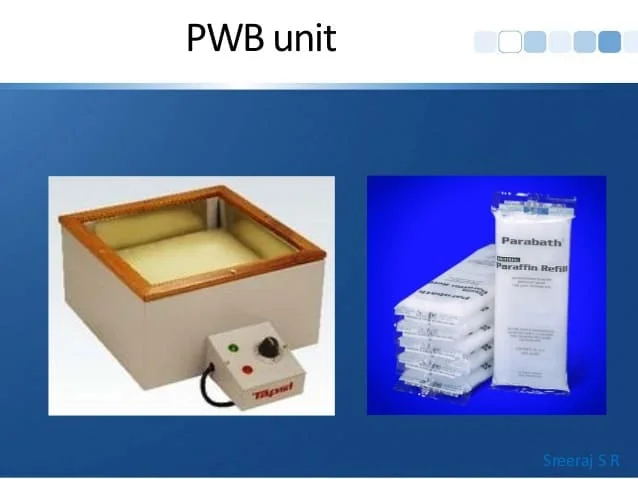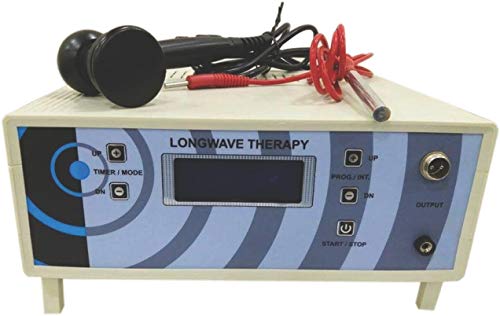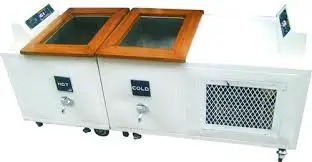Russian Current: Protocols, Indication, Contraindication
Table of Contents
What is a Russian Current?
~The Russian Current waveform is a type of electrical stimulation that delivers medium-frequency current in alternating pulses or bursts of energy and is effective in reducing pain as well as increasing muscular strength.
~An electrotherapeutic modality that uses medium frequency (2,000-10,000 Hz) polyphasic alternating current wave-forms to strengthen muscles.
~Although it is a medium frequency current but the nerves are stimulated because it is interrupted to give a low frequency stimulation of 50 Hz.
~Russian current consists of 2500 Hz frequency evenly alternating medium frequency current applied as a series of separate bursts having a pulse duration of 0.2 ms (200 µs) which is interspersed (interrupted) with 10 ms (1000 µs) when no current flows producing 50 bursts per second (50 Hz) which is in fact like the low-frequency faradic type of current.
~Total Physio uses Russian Stimulation to stimulate motor nerves. Its capability of a high frequency (2500Hz) allows for deep muscle penetration, stimulation, and intense muscle fiber contraction.
~It’s commonly used to relieve muscle spasms and assist patients suffering from Scoliosis.
~The current Russian or Russian Stimulation is the name of the treatment of muscle tone achieved through a device for electrical stimulation that can promote the contraction of muscles by means of electric current of medium and low frequency depolarized.
~The device emits electrical impulses that speed up metabolism, tense muscles, and reduce body fat.
~The theoretical basis for the use of this current is that maximal electrical stimulation of nearly all motor units in a muscle to contract something that can not be obtained in voluntary contraction. This produces greater muscle contraction and hence produces hypertrophy.
Protocols for Russian current:
~Protocol for muscle strengthening/ hypertrophy:
~Amplitude/ Intensity:
~Tetanic contraction
~Pulse rate:
~50 – 70 Hz
~Pulse duration:
~150 – 200 µs
~Apply current during volitional activities (voluntary activities)
~Isometric exercises at several points through the range of motion.
Slow isokinetic (movements in the same direction) exercises 5 – 10° per second.
Short arc joint movement when ROM is restricted.
~Protocol for muscle spasm reduction:
~Amplitude: Tetanic contraction depending upon patient tolerance
~Pulse rate: 50 – 70 Hz
~Pulse duration: 50 – 175 µs
~Muscle contraction isometric
Characteristics of Russian current:
~carrier frequency
~waveform
~current amplitude
~bursts frequency
~burst duration
~on/off ratio
~duty cycle
~ramp up and down
~training protocol
~duration & frequency of treatment
~electrode placement
~time delay switch
-carrier frequency-2500 HZ(2.5 KHz)
–wave form– polyphasic sinusoidal waveform
–current amplitude-the maximum current amplitude is 100 mA. clinical used at 70 mA.
–bursts frequency-50 hz
–bursts duration-10 ms
–ON/OFF ratio– the on:off ratio is defined as a ratio of the time during which there is stimulation (contraction)to the time during which there is no stimulation(no contraction)set as 10 ms:10 ms.
-The duty cycle:-duty cycle is the proportion of on time to the summation of both the on and off time expressed as percentages For example 10:10 sets up a duty cycle of =10/(10+10) x 100 =50%. russian current is produced with a duty cycle of 50%.
–ramp up & down: setting the ramp time is very important to evoke contraction similar to muscle contraction. as the ramp allows a gradual increase of intensity with the associated gradual increase of muscle contraction. Set for 1-2 seconds.
~training protocol with Russian current: the wide and most popular clinical protocol used with Russian current is (10/50/10)which is,
- 10 = muscle contractions, lasting for 10 seconds.
- 50=off times (no contraction)for 50 seconds
- 10 cycles repeated for 10 times.
~duration and frequency of treatment: the recommended duration of treatment is 10 minutes, once daily per week for several weeks(3-6 months)
~electrode placement: arranged parallel to the direction of muscle fibers so that it is at the estimated line of pull of the muscle.
~time delay switch: synchronous mode (both channels triggered simultaneously -achieved by not setting time delay)reciprocal mode(channel 1 is on then channel 2 is off -achieved by setting time delay equal to the time of channel 1)overlapping mode(channel 2 overlaps with on time and off time of channel 1-achieved by setting time delay more than 1 sec but less than on the time of channel 1)
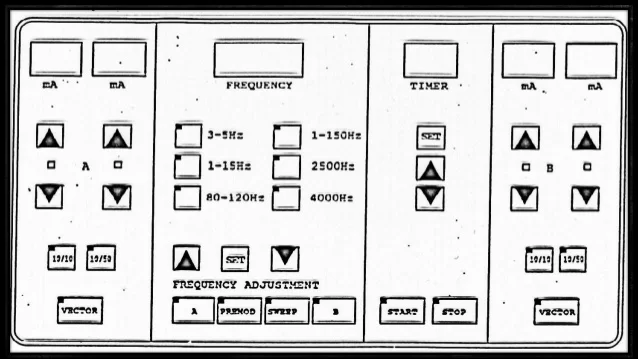
Physiological effects:
~the total number of bursts delivered per second.
~russian current has the capacity to depolarize
~sensory nerve fibers-moderate prickling sensation
~motor nerve fibers -tetanic muscle contraction
this contraction is painless due to the sensory nerve blocking of the pain gate.
~allow the use of high amplitude:
~contraction stronger than those generated by voluntary control(voluntary contraction-motor units recruited asynchronously while in electrically evoked muscle contraction motor units fire synchronously)
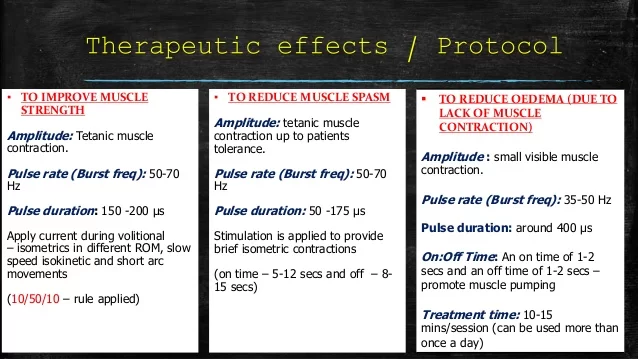
Indications of Russian current
~post knee ligaments surgery
~post arthroscopic knee surgery
~following ligament sprain
~post casting
~muscle spasm
~strengthening the muscular system of healthy and athletic persons.
Contraindication of Russian current
- over the anterior cervical area
- over haemorrhagic area
- over neoplastic area
- over the metallic and electronic implant
- over area of impaired skin sensation
- Cardiac pacemakers and Arrhythmias
- Thrombosis and thrombophlebitis (inflammation of the wall of the vein)
- Early tendon transfer and repair
- During Pregnancy: On pelvic, lower back, and abdomen
- Unconscious patient
- Recent radiotherapy
- Carotid sinus
- Child with mental disturbance
- Malignancy
- Infected wounds and skin lesions
FAQ
Russian current is an electric current of medium frequency (2,000-10,000 Hz) polyphasic alternating current waveforms to strengthen muscles. It is used to strengthen skeletal muscle at a low treatment cost. It is important to know the effects of Russian currents on bone tissue since various electric currents could be a useful and low-cost method to treat various disorders.
Russian current is an electric current of medium frequency (2,000-10,000 Hz) polyphasic alternating current waveforms to strengthen muscles. It has been used in Physiotherapy- the most commonly used electrical stimulation to increase the strength of the muscle in atonia (not in plegia) is Russian current.
Russian current is developed by Russian scientist, Dr. Yakov Kots in 1977s, to increase muscle force that increases the maximum voluntary contraction. Russian current is an electric current of the medium frequency (2,000-10,000 Hz) polyphasic alternating current waveform. It is an intermittent alternating sinusoidal current with a medium frequency of 2500Hz and is used in bursts or series of pulses.
Electromyostimulation using Russian currents, also known as Kotz currents, could improve the strength of muscles.
The most commonly used Russian current treatment is to improve the strength of spinal muscles with exercises: the Russian current (RC) is reported as an alternative treatment option, because it stimulates muscle contraction, improving muscle strengthening and hypertrophy.



